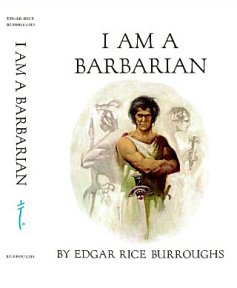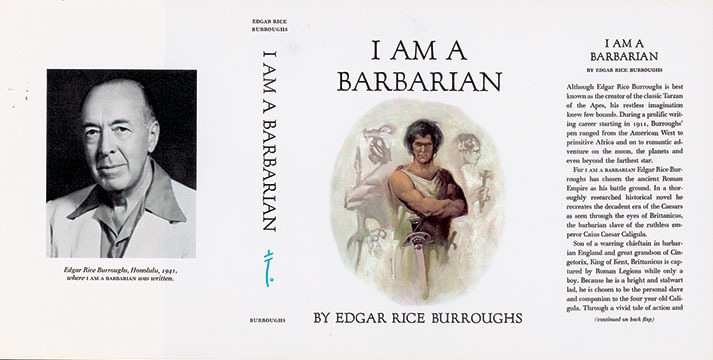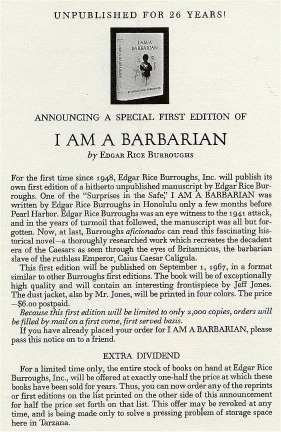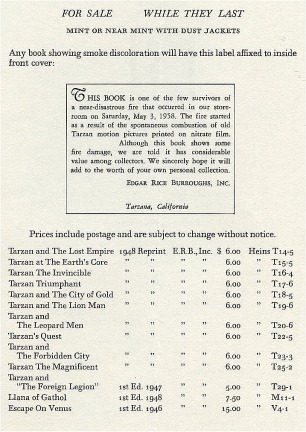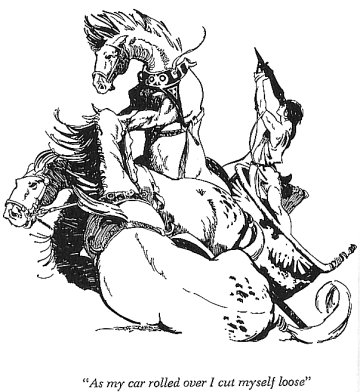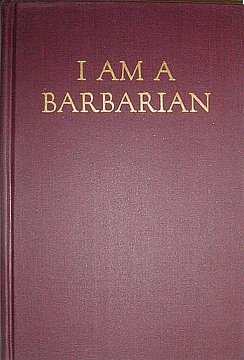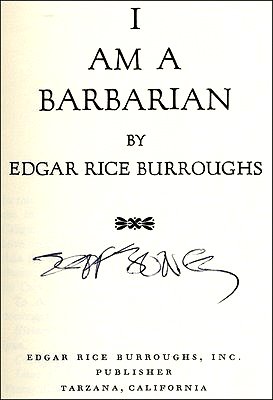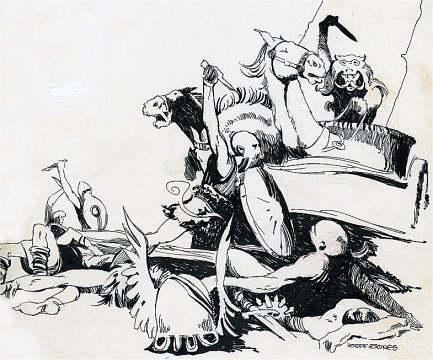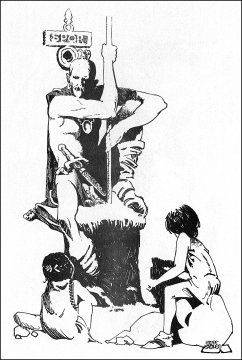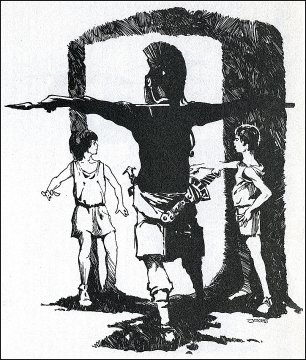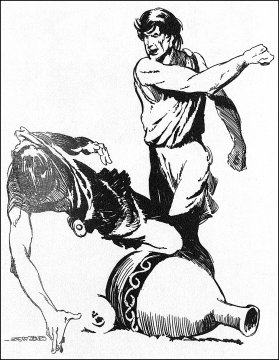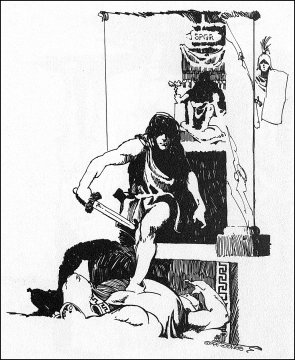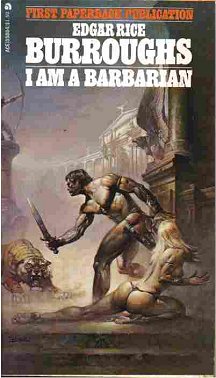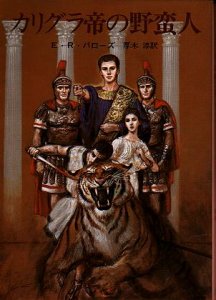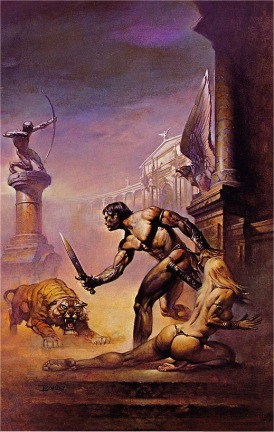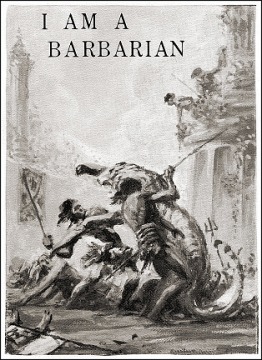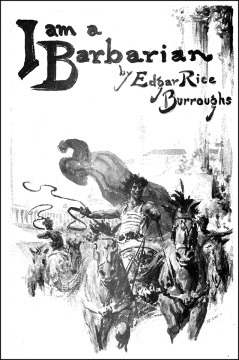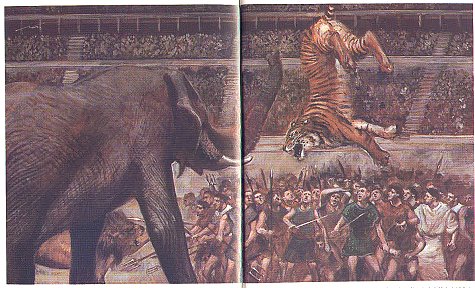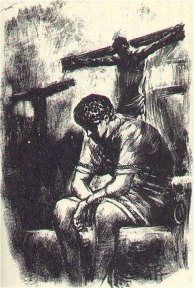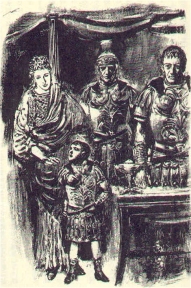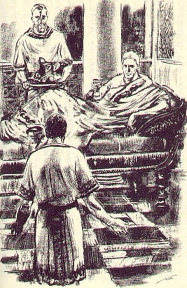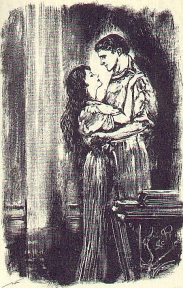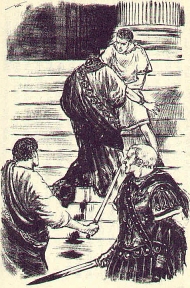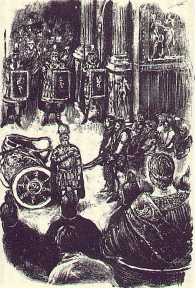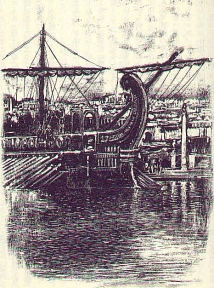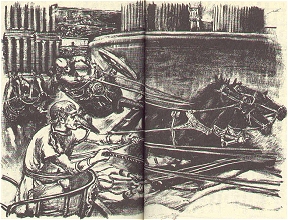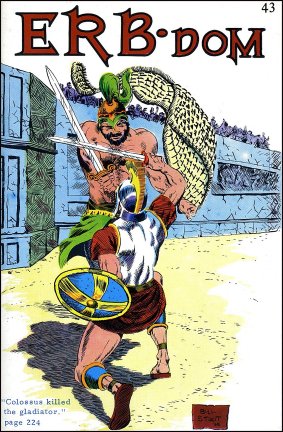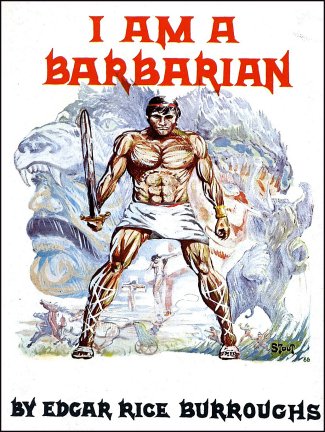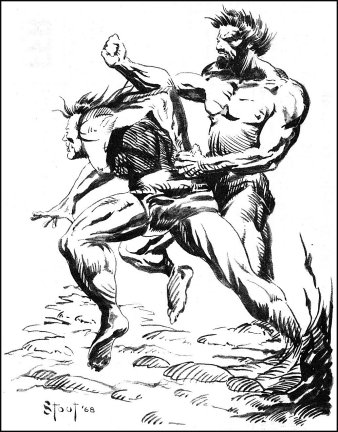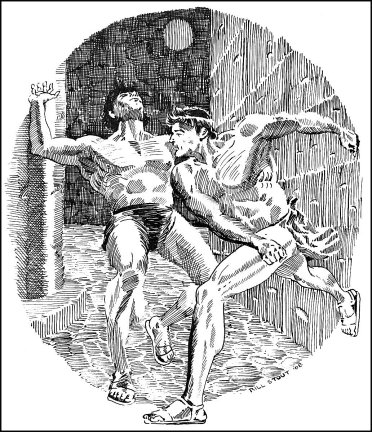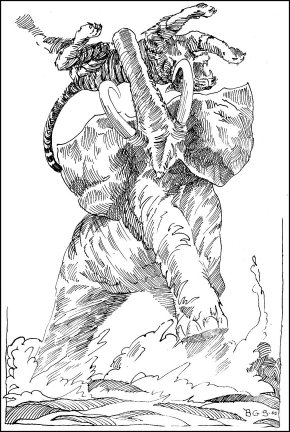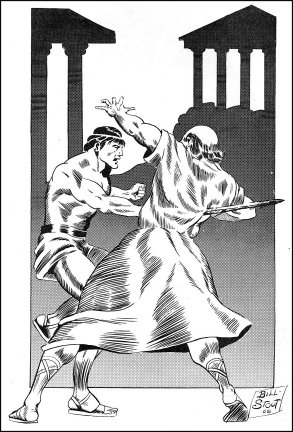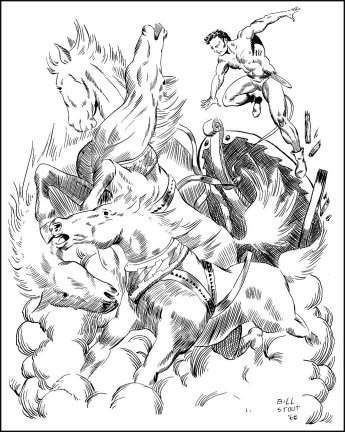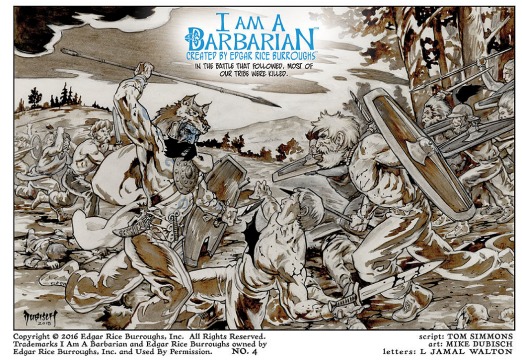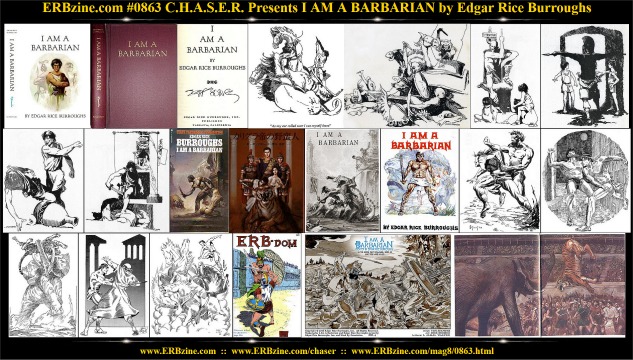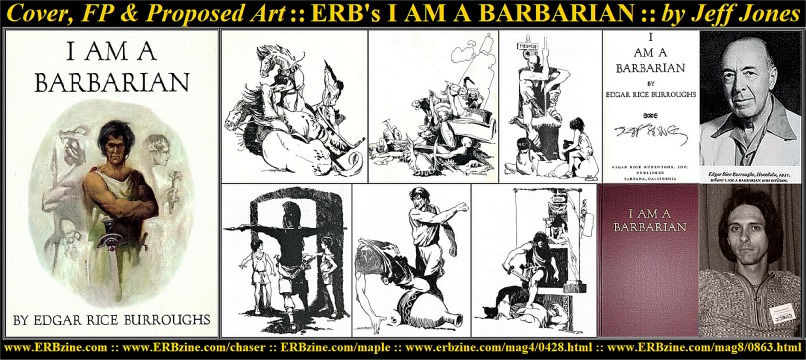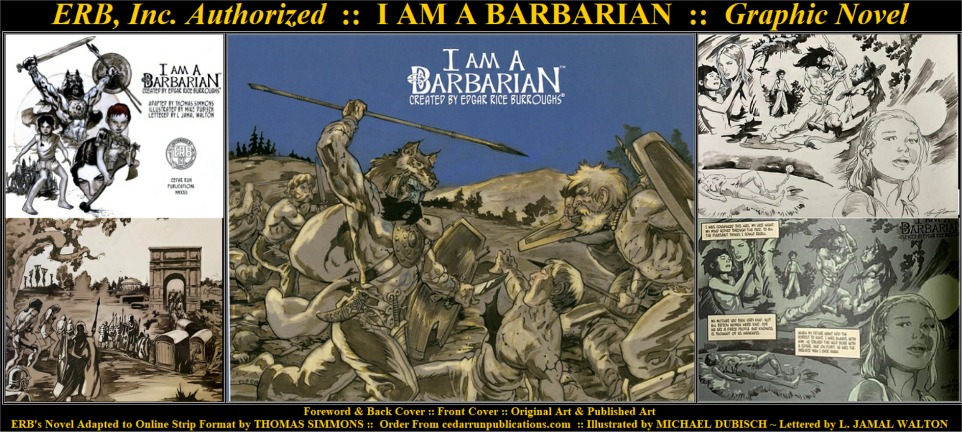I Am a Barbarian
By Edgar Rice Burroughs (Edgar Rice Burroughs Inc., 1967)
[I wrote this review a few years ago and it appeared
on a website, but it seems to have vanished into the ether of time on the
Internet. Considering my recent run on ERB material, and that I’m currently
reading and preparing a review for the “companion” novel to this one, Tarzan
and “The Foreign Legion”, I felt I needed to revive this overview.]
Edgar Rice Burroughs, inventor of Tarzan and John Carter
of Mars—and by extension the pulp magazines as we know them—wrote I Am
a Barbarian in 1941, when his creative forces appeared spent. He had started
his final series, the disappointing and creatively stagnant Venus/Amtor
novels, in 1932. The Tarzan adventures limped along, and the once superb
Martian series had sputtered out. He wrote only one more complete novel
after this one,
Tarzan and “The Foreign Legion.” The entry of the
United States into World War II prompted Burroughs to take a job as a war
correspondent, reducing the time he devoted to writing (or, more accurately,
dictating) fiction.
I Am a Barbarian did not see print until 1967,
nineteen years after the author’s death, when the company he created, ERB
Inc., released it in a limited edition of two hundred hardcover books.
It soon appeared in a mass-market paperback edition with a gorgeous Boris
Vallejo illustration adorning the front (seen here). But it remains one
of Burroughs’s least-known works, and even with the recent publication
of quality editions of his books, I Am a Barbarian still languishes out
of print.
This is an unfortunate situation, because I Am a Barbarian
rates as one of the author’s best-written works, and it differs substantially
from the standard adventure fare that made him famous but eventually turned
stale. Perhaps Burroughs’s had simply tired of the chase-and-escape formula
that he had relied on with so many other novels and wanted try something
different. The virile title immediately suggests Burroughs business-as-usual,
but this isn’t a “barbarian” adventure like a Tarzan novel or The Eternal
Savage. It’s a fictionalized historical biography, essentially Burroughs’s
version of Robert Graves’s I, Claudius. (Naming it I, Barbarian, would
have been a touch too obvious, but I Am a Barbarian certainly comes close.)
Graves’s immensely popular historical novel, published
seven years earlier to great acclaim, told the first-person account of
the early Julio-Claudian Roman emperors Augustus, Tiberius, and Caius.
I Am a Barbarian uses the identical concept and time period, while slanting
it more toward its author’s talents. Instead of viewing ancient Rome through
the eyes of a future emperor, Burroughs describes it through the view of
a hardened Briton slave. He also narrows the focus to that of one emperor:
Caius Caesar, the mad despot better known by his childhood nickname “Caligula”
(“Little Boot”).
As he did in many of his works, Burroughs uses a preface
to create the illusion of veracity. The Foreword claims that the book is
a “free translation of the memoirs of Britannicus, for twenty-five years
the slave of Caius Caesar Caligula, emperor of Rome from A.D. 37 to 41,”
and lists real sources used to authentic the “facts.” Burroughs does a
fine job of maintaining the illusion of Britannicus’s historic voice and
presents a realistic look at ancient Rome. The dialogue sometimes slips
into Americanized slang, like “nuts!” and “fat chance,” but otherwise Burroughs’s
prose stays faithful to its narrator and period.
Most of the novel occurs during the rule of Tiberius Caesar
(14–37 C.E.) and concludes with Caligula’s brief but gory reign (37–41
C.E.). The narrator is Britannicus, a slave from Briton whom the young
Caligula demanded as his personal servant. Britannicus lives at the whim
of this petulant Caesar and his hateful mother, Agrippina, granddaughter
of the beloved first emperor, Caesar Augustus. Britannicus has an amicable
relationship with Caligula—one of strangest male relationships in the Burroughs
canon—but one immersed in tension. Because of the cruel murders of his
parents after the Romans captured them, Britannicus swears that one day
he will “kill a Caesar.” Readers should have no trouble deducing which
Caesar he has in mind.
Black comic satire of the decadence of Rome—or more specifically
the decadence of the Julio-Claudians—dominates the book, and Burroughs
shows a knack for the brand of biting humor that he rarely got to practice
in his other works. Britannicus spares no opportunity to criticize his
masters: “From birth, apparently, all the male children in both lines had
that idea impressed upon them—to grow up and become an emperor and be poisoned
and stabbed in the back. It always seemed to me a ridiculous ambition.”
He describes the hateful Agrippina:
Her pride in the Julian blood stemmed from the fact that
the family was supposed to have descended directly from a goddess: Venus.
But why that should have been anything to boast of, I do not know. Had
I been descended from Venus, I should have kept the matter very quiet.
She had been a notoriously loose woman, appallingly promiscuous.
Although Britannicus is a barbarian slave among the aristocracy
of Rome, he has his own trace of snobbery. He takes pride in his heritage
from Cingetorix, the King of Kent (mentioning it innumerable times), and
disdains the plebs of Rome as much as he hates the tainted aristocracy.
Like Robert E. Howard, Burroughs shows an appreciation of the moral clarity
of the barbarian, but he also had a streak of elitism that percolates through
his writing, and this book is no exception.
During the twenty-five years that I Am a Barbarian covers,
the story switches between the political jockeying, murdering, and general
vileness of the Julio-Claudians and the personal life of Britannicus. Britannicus
forms important friendships and develops into an excellent charioteer,
while the family that owns him tries to maneuver their children onto the
Emperor’s throne when the aged Tiberius finally dies. The emphasis is on
character and style instead of action, which might disappoint fans of Burroughs’s
early fast-paced adventures. The action passages, which include a deadly
chariot race, a battle in the Coliseum with a tiger, and a tense near-crucifixion,
are very exciting. But the book’s effectiveness stems from Burroughs’s
readable style and the fun he has with the sarcastic commentary on Roman
decadence.
Burroughs still stumbles over some of his favorite overused
devices. He hauls out a chestnut that originates back in his first novel,
A Princess of Mars: the frustrated but idealized romantic pursuit. The
love that Britannicus has for the slave girl Attica, who spurns him frequently
just because she can, feels too similar to the frustrated romantic chases
in Tarzan of the Apes, At the Earth’s Core, Thuvia, Maid of Mars, and many
others. A love triangle between Brittannicus, Attica, and charioteer Numerius
has no genuine tension because Britannicus and Numerius remain friendly
with each other in their rivalry.
Burroughs sometimes relies too heavily on his sources,
especially I, Claudius. He enumerates the terrors of the Caligula’s reign
in a rote fashion, as if he simply had I, Claudius and Suetonius’s Lives
of the Twelve Caesars open in front of him and copied off the mad emperor’s
“greatest hits.” All of Caligula’s famed sayings and atrocities—”Off comes
this head whenever I give the word,” “Let them hate provided they are afraid,”
random slayings of men with more hair than he, nominating his favorite
horse to the Senate—get ticked off the list one-by-one. As interesting
as Caligula’s madness is, in these passages the book gets too distanced
from Britannicus and too imbedded in the blood-red splashes of history.
Burroughs does finally weave the romance with Attica into Caligula’s story
with a thrilling chariot race and the passionate, bloody conclusion.
Fans and admirers of Edgar Rice Burroughs who have yet
to experience I Am a Barbarian should seek it out. Despite the novel’s
flaws (and what Burroughs’s novel isn’t flawed?) it will remind readers
that the man from Tarzana was a far more talented and varied writer than
his critics—and some of his fans—ever imagined.

